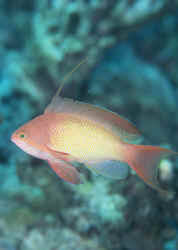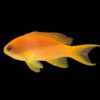The Dragon in Ancient Astronomy: A Symbol of Celestial Power and Cosmic Influence

The dragon, a creature found in myths and legends across the globe, holds a significant place in various ancient cultures, often symbolizing power, mystery, and cosmic forces. One of the most intriguing aspects of the dragon is its connection to astronomy, where it frequently appears in ancient depictions of the cosmos. The image of the dragon in these astronomical paintings and representations is not merely that of a mythical beast but a powerful symbol that signifies the mysteries of the universe, the influence of celestial bodies, and the eternal struggle between chaos and order.
This article will explore the role of dragons in ancient astronomical art, examining their depiction in the star maps, constellations, and cosmic myths of ancient civilizations. We will delve into the symbolic meaning of dragons in these contexts and the cultural interpretations of their celestial significance.
The Dragon as a Celestial Symbol
In ancient astronomy, the dragon is often depicted as a guardian or ruler of the cosmos, controlling the movements of the stars and planets. Its role as a celestial being reflects the importance of dragons in the cosmologies of various cultures, where they were believed to have control over natural forces and the heavens themselves.
Dragons are frequently associated with the idea of cosmic balance, as they embody both the destructive and protective aspects of the universe. In many ancient cultures, the dragon was viewed as a creature that helped maintain the equilibrium between opposing forces, such as light and darkness, order and chaos. Its connection to astronomy further emphasizes this role, as the movement of celestial bodies was often interpreted as the interplay of these opposing forces.
In Chinese mythology, for example, the dragon is a symbol of strength, good fortune, and the natural world’s harmony. It is said to control the water elements, including rivers, seas, and rain, and to have the ability to ascend to the heavens, where it plays a central role in cosmic affairs. The dragon’s influence over the heavens is a reflection of its power over the celestial realm, where it is believed to control the movements of the stars and constellations.
The Dragon in Ancient Star Maps and Constellations
One of the most notable places where dragons appear in ancient astronomical art is in the star maps and constellations of various cultures. These star maps were used by ancient astronomers to track the movement of celestial bodies and navigate the skies, and they often featured dragons as key symbols.
- The Chinese Dragon and the Celestial Dragon
In Chinese astronomy, the dragon is a prominent figure in the sky, and it is closely associated with several constellations. The most famous of these is the Chinese constellation known as the “Azure Dragon” (Qing Long). The Azure Dragon is one of the Four Symbols of Chinese astronomy and represents the East, one of the cardinal directions. This celestial dragon is often depicted as a great serpent-like creature winding across the sky, guarding the East and the rising sun.
The Azure Dragon is not just a constellation but also a symbol of imperial power and the ruler’s connection to the heavens. In Chinese cosmology, the emperor was often seen as the “Son of Heaven,” and his rule was believed to be sanctioned by celestial forces. The Azure Dragon’s presence in the star maps was therefore a reminder of the emperor’s divine authority and his role in maintaining harmony between earth and heaven.
Additionally, other dragon-related constellations in Chinese astronomy include the “Black Tortoise” and the “White Tiger,” which are also important celestial symbols in the Chinese worldview. These dragons and other creatures represent different aspects of the universe, such as the cycle of the seasons and the protection of various natural elements.
- The Dragon in Western Star Maps
In Western astronomy, dragons also appear prominently in ancient star maps, although their role is often less symbolic and more associated with specific constellations. One of the most well-known examples is the constellation Draco, which is Latin for “dragon.” The Draco constellation is one of the oldest and most recognized constellations in the night sky, and it is prominently featured in many ancient star maps, including those of the Babylonians, Greeks, and Romans.
In Greek mythology, Draco is associated with the story of Ladon, the hundred-headed dragon who guarded the golden apples in the Garden of the Hesperides. According to the myth, the hero Heracles (Hercules) was tasked with stealing the apples, and in the process, he defeated Ladon. After his death, Ladon was placed in the sky as the Draco constellation, symbolizing the eternal nature of the dragon and its cosmic role.
In both Western and Eastern traditions, the dragon is a symbol of cosmic order and balance. The positioning of Draco in the northern part of the sky represents stability and permanence, with the dragon’s long, winding form suggesting the cyclical nature of time and the stars’ movements.
The Dragon and Cosmic Myths
In addition to its appearance in star maps and constellations, the dragon is also central to many cosmic myths that explain the creation of the universe and the movements of celestial bodies. These myths often portray the dragon as a powerful entity that governs the heavens, either by creating or destroying the universe, depending on the culture.
- The Chinese Cosmic Dragon: Creation and Destruction
In Chinese mythology, the dragon is often seen as a creator and destroyer of worlds. One of the most famous myths involving the dragon is the story of the Dragon King, who is said to have created the rivers, lakes, and seas. According to this myth, the Dragon King was responsible for regulating the flow of water and ensuring the fertility of the land, which was vital for agricultural societies.
At the same time, the dragon’s ability to summon storms and floods also made it a symbol of destruction. In some versions of the myth, the Dragon King is said to have caused great floods by fighting with the other gods, representing the duality of the dragon as both a protector and a destroyer. This dual role of the dragon as a force of both creation and destruction mirrors the cyclical nature of the cosmos, where the destruction of one thing often leads to the creation of something new.
- Norse Mythology: The Dragon as the Guardian of Cosmic Order
In Norse mythology, the dragon is a central figure in the cosmic battles that take place in the sky. The most famous dragon in Norse mythology is Jörmungandr, the Midgard Serpent, who is said to encircle the earth and prevent the forces of chaos from entering the world. Jörmungandr is associated with the end of the world, or Ragnarök, when the dragon will rise from the ocean and engage in a final battle with the god Thor.
The presence of Jörmungandr in the sky reflects the Norse belief that dragons were creatures of great power and that they played an essential role in maintaining the balance of the cosmos. In this sense, the dragon’s role in Norse mythology is akin to that of the cosmic serpent or dragon in other cultures, where it represents both the cosmic order and the inevitable destruction that occurs as part of the natural cycle.
- The Mayan Dragon: The Serpent of the Milky Way
In Mayan astronomy, the dragon is symbolized by the great celestial serpent, known as Kukulkan or Quetzalcoatl in different Mesoamerican cultures. This feathered serpent is associated with the Milky Way, and it is believed to control the flow of stars and other celestial phenomena. The serpent’s body is said to stretch across the heavens, representing the path of the sun and the stars as they move through the sky.
Kukulkan was not only a symbol of the heavens but also of time and the cycles of life. The Mayans believed that the movements of this celestial serpent were tied to agricultural cycles, with the serpent’s ascension and descent marking the changing seasons and the flow of time. The dragon’s role as a cosmic figure in Mayan astronomy is emblematic of the interconnectedness between the heavens and earthly life, where the forces of the universe are reflected in the rhythms of nature.
Conclusion: The Dragon as a Celestial Power
The dragon’s presence in ancient astronomical art reveals its significance as a powerful celestial symbol. Across cultures, the dragon is seen as a guardian of the cosmos, controlling the movement of the stars and planets and ensuring the balance between opposing forces in the universe. Whether depicted as the cosmic serpent in Chinese mythology, the dragon guarding the golden apples in Greek mythology, or the celestial serpent in Mayan astronomy, the dragon represents the mysteries and power of the heavens.
In these ancient depictions, the dragon is not just a mythical creature but a symbol of cosmic order, the cyclical nature of time, and the eternal struggle between creation and destruction. Its role in ancient astronomy reflects humanity’s fascination with the cosmos and the belief that celestial bodies are governed by powerful forces—forces that are often symbolized by the mighty dragon.

